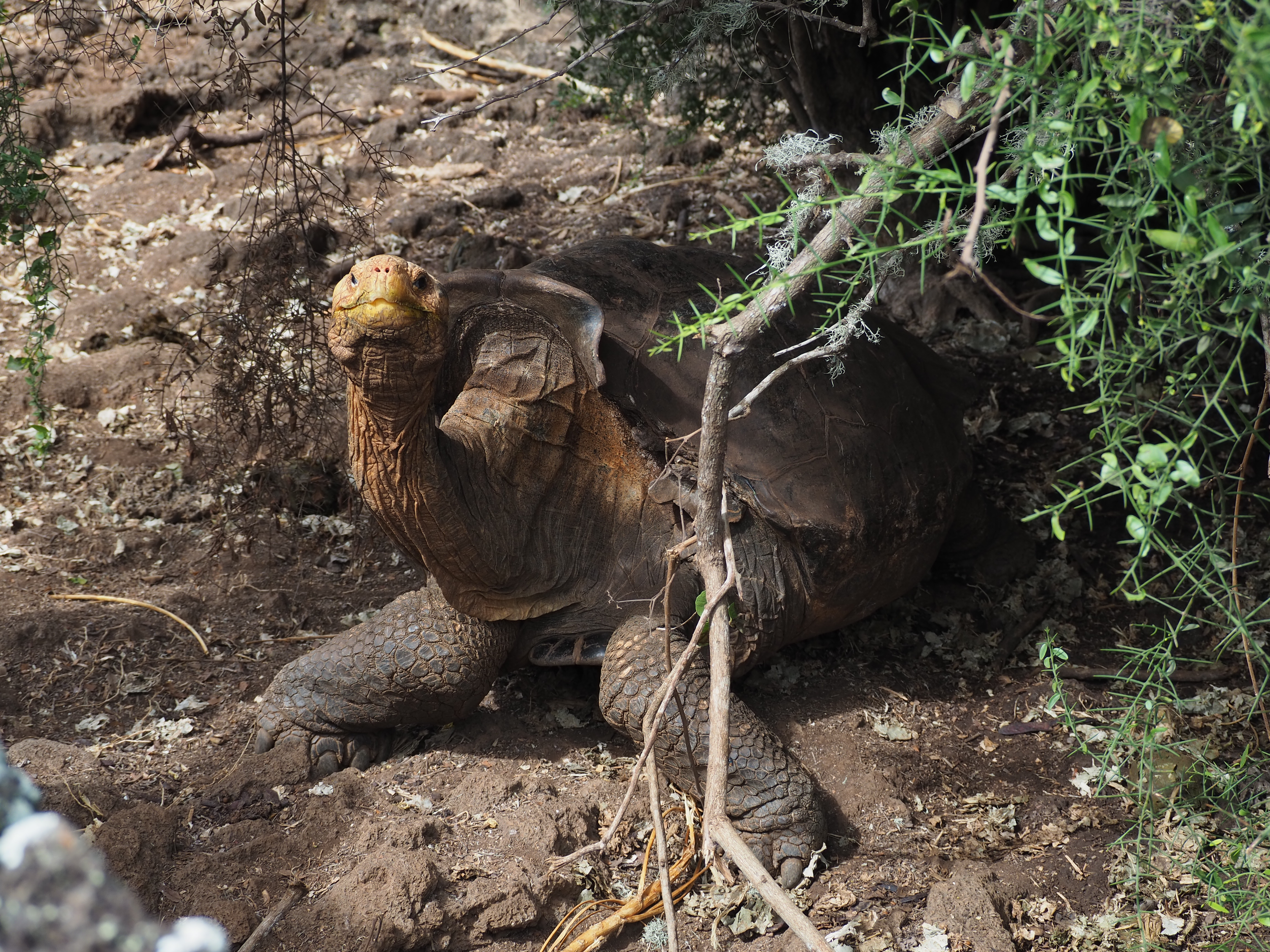|
Diego (tortoise)
Diego is a Hood Island giant tortoise. Thought to have been hatched on Española Island, Galápagos, he was captured as a young adult and shipped to the United States where he was exhibited at zoos. By the late 1940s he was at San Diego Zoo, California, though his species was not known. A captive breeding effort for the critically endangered Hood Island tortoises was set up in 1976, by which time only 15 individuals were known to survive. Diego was identified as a Hood Island tortoise by DNA testing and was sent to Santa Cruz Island to join the program. Diego fathered more than 900 offspring who were released on Española which helped to increase the wild population to more than 2,000. The breeding program ended in January 2020 and Diego is officially retired, and was released into the wild in June 2020. Early life Diego is thought to have been hatched on Española Island, one of the Galápagos Islands, before 1920. He was captured and transported to the United States ... [...More Info...] [...Related Items...] OR: [Wikipedia] [Google] [Baidu] |
Hood Island Giant Tortoise
The Hood Island giant tortoise (''Chelonoidis niger hoodensis'') is a subspecies of Galápagos tortoise endemic to Española Island in the Galápagos. Population history This population was very heavily exploited by whalers in the 19th century and collapsed around 1850. 13 adults were found in the early 1970s and held at the Charles Darwin Research Station as a breeding colony. The two males and 11 females were initially brought to the Darwin Station. Fortuitously, a third male (Diego) was discovered at the San Diego Zoo and joined the others in a captive breeding program. Mating had not occurred naturally for some time, because the individuals were so scattered that they did not meet. Following the successful captive breeding program, large numbers have been released back into the wild and are now breeding on their own with the population reaching over 2,300 individuals as of August, 2020. Description It is one of the smallest subspecies of Galápagos tortoise. Its black, saddl ... [...More Info...] [...Related Items...] OR: [Wikipedia] [Google] [Baidu] |
Española Island
Española Island (Spanish: ''Isla Española'') is part of the Galápagos Islands. The English named it ''Hood Island'' after Viscount Samuel Hood. It is located in the extreme southeast of the archipelago and is considered, along with Santa Fe, one of the oldest, at approximately four million years. A popular tourist stop, Isla Española is the most southerly island in the Galápagos Archipelago. The climate is very dry, like most of the Archipelago. But due to the flatness of the island, it is the driest of these islands, with only a few inches of rain per year. It is about a 10- to 12-hour trip by boat from Isla Santa Cruz. Wildlife Tourists come to see the waved albatrosses (from March to January, almost the entire world population breeds on the island) and the mating dances of blue-footed boobies. Two spots are especially popular with visitors: Bahía Gardner, which has a lovely beach; and Punta Suárez, of interest because of its varied bird-life. This island has its ... [...More Info...] [...Related Items...] OR: [Wikipedia] [Google] [Baidu] |
Ecuador
Ecuador ( ; ; Quechua: ''Ikwayur''; Shuar: ''Ecuador'' or ''Ekuatur''), officially the Republic of Ecuador ( es, República del Ecuador, which literally translates as "Republic of the Equator"; Quechua: ''Ikwadur Ripuwlika''; Shuar: ''Ekuatur Nunka''), is a country in northwestern South America, bordered by Colombia on the north, Peru on the east and south, and the Pacific Ocean on the west. Ecuador also includes the Galápagos Islands in the Pacific, about west of the mainland. The country's capital and largest city is Quito. The territories of modern-day Ecuador were once home to a variety of Indigenous groups that were gradually incorporated into the Inca Empire during the 15th century. The territory was colonized by Spain during the 16th century, achieving independence in 1820 as part of Gran Colombia, from which it emerged as its own sovereign state in 1830. The legacy of both empires is reflected in Ecuador's ethnically diverse population, with most of its mill ... [...More Info...] [...Related Items...] OR: [Wikipedia] [Google] [Baidu] |
Diego At The Charles Darwin Research Station 02
Diego is a Spanish masculine given name. The Portuguese equivalent is Diogo. The name also has several patronymic derivations, listed below. The etymology of Diego is disputed, with two major origin hypotheses: ''Tiago'' and ''Didacus''. Etymology ''Tiago'' hypothesis Diego has long been interpreted as variant of ''Tiago'' (Brazilian Portuguese: ''Thiago''), an abbreviation of ''Santiago'', from the older ''Sant Yago'' "Saint Jacob (name), Jacob", in English known as James the Great, Saint James or as ''San-Tiago''. This has been the standard interpretation of the name since at least the 19th century, as it was reported by Robert Southey in 1808 and by Apolinar Rato y Hevia (1891). The suggestion that this identification may be a folk etymology, i.e. that ''Diego'' (and ''Didacus''; see below) may be of another origin and only later identified with ''Jacobo'', is made by Buchholtz (1894), though this possibility is judged as improbable by the author himself. ''Didacus' ... [...More Info...] [...Related Items...] OR: [Wikipedia] [Google] [Baidu] |

